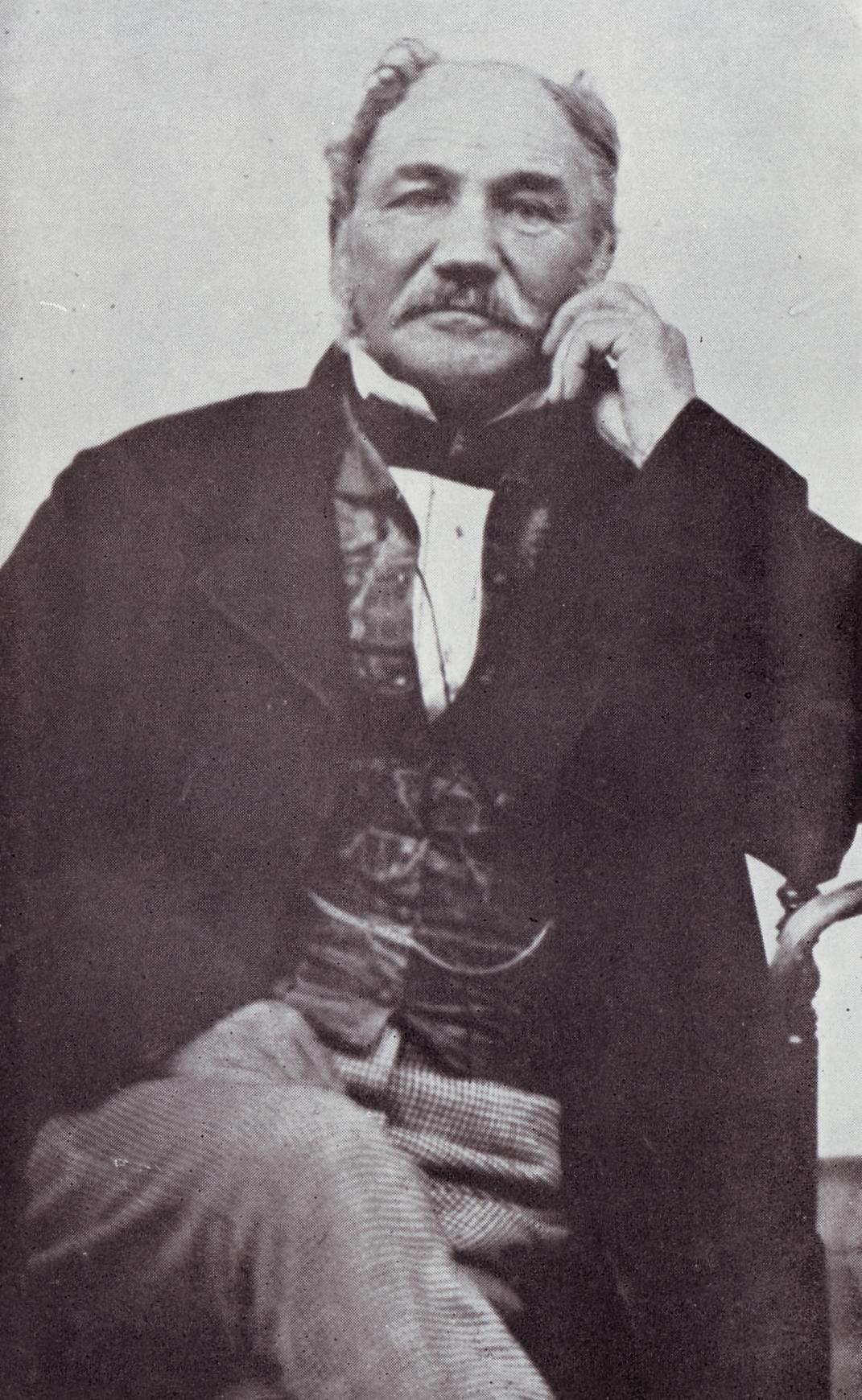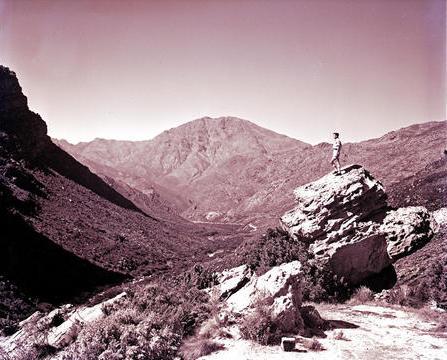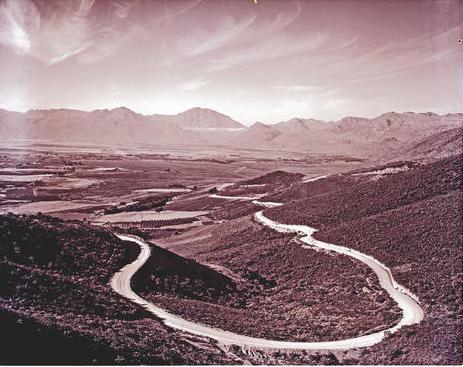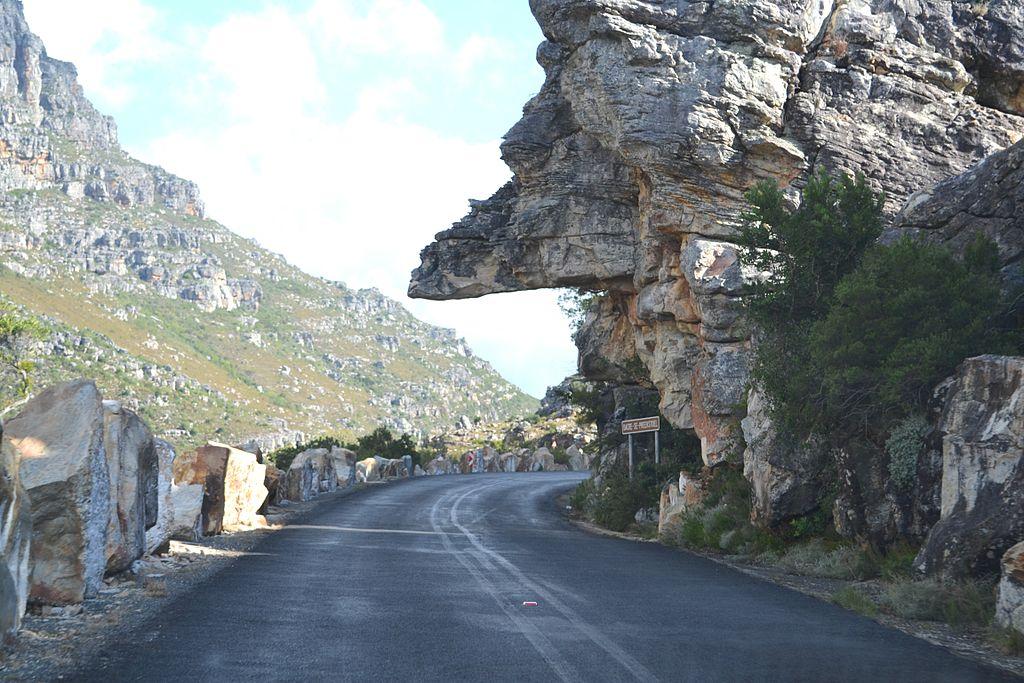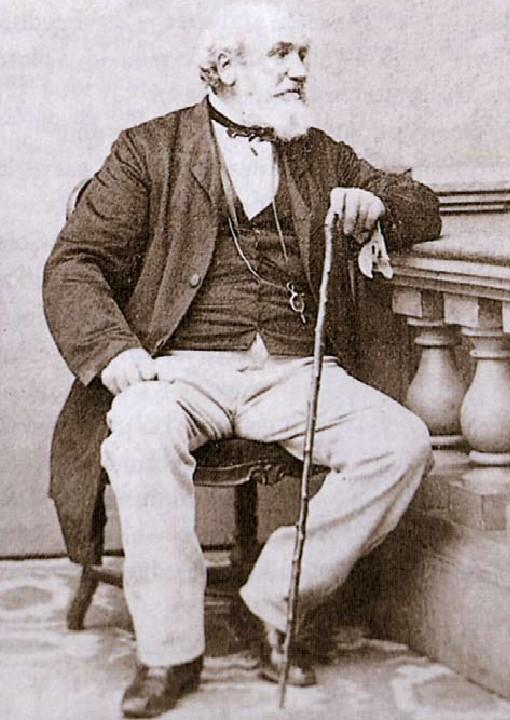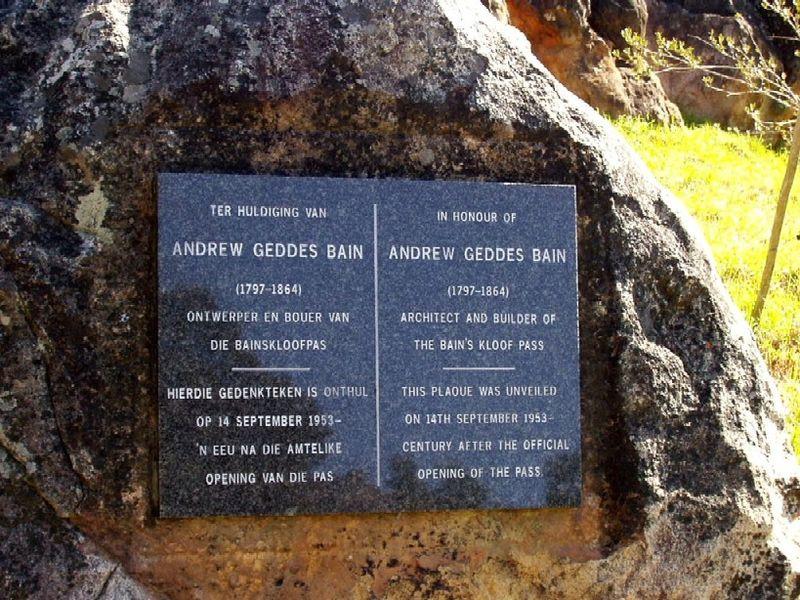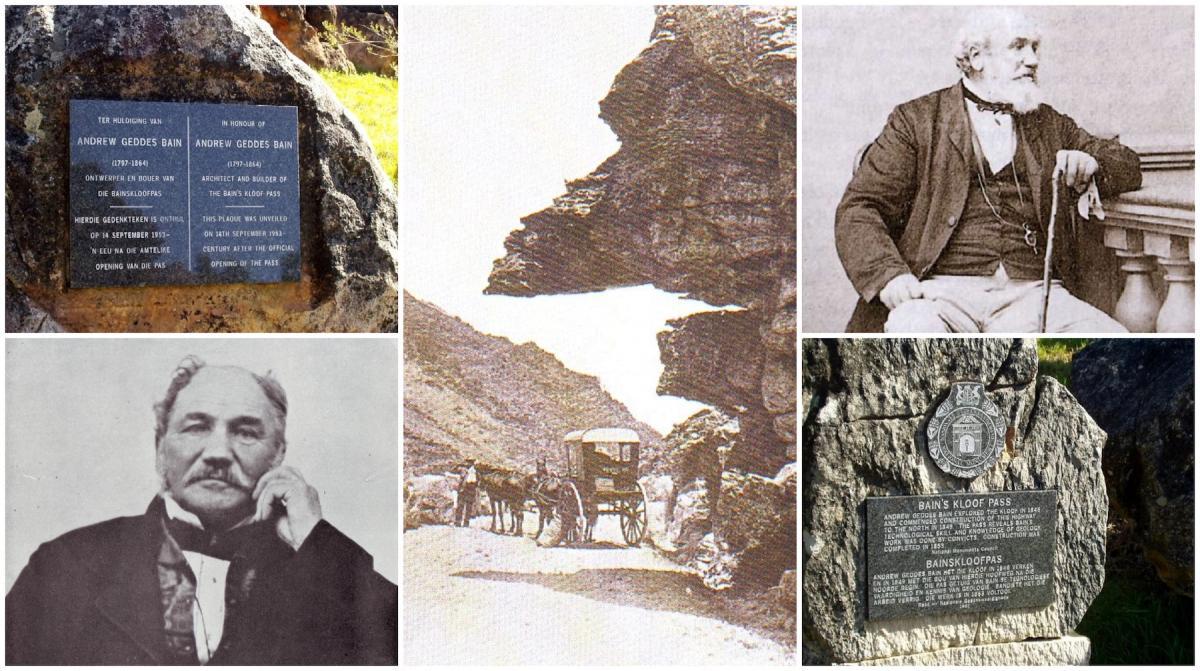
Disclaimer: Any views expressed by individuals and organisations are their own and do not in any way represent the views of The Heritage Portal. If you find any mistakes or historical inaccuracies, please contact the editor.
In the article below, Tony Murray looks at the remarkable life of Andrew Geddes Bain. The piece first appeared in the publication 'Past Masters: Pioneer Civil Engineers who contributed to the growth and Wealth of South Africa'. Click here to view the stories of other great engineers.
Bain was a major figure in opening transportation routes into the interior of South Africa, and is also regarded as the father of South African geology. He was born in Thurso, Scotland in May 1797, the only child of Alexander Bain and his wife Jean Geddes. Both parents died when he was a child and he was brought up by an aunt who lived near Edinburgh. Here he obtained a classical education but received no vocational training. In 1816 he emigrated to South Africa in the company of his uncle Lt. Col. William Geddes of the 83rd Regiment, which was stationed at the Cape.
In November 1818 he married Miss Elizabeth Maria von Backstrom, who bore him 11 children. The seventh child, Thomas J.C. Bain, also became a prominent South African civil engineer. Elizabeth died in 1857, and he was then briefly married to Theodora Kerr.
Bain established himself as a saddler in the town of Graaff-Reinet, and became known as a hunter and explorer. With a companion he was the first white man to penetrate Africa as far north as latitude 24° S and survive.
Andrew Geddes Bain (Past Masters)
In 1832 he offered to construct a pass across the Oudeberg 40km north of the town, and having carried out this project successfully he then built Van Ryneveld's Pass immediately outside the town. Here he was assisted by the local Government Land Surveyor, the well-known Capt. Charles Stretch, from whom no doubt he learnt some survey skills. Both jobs were carried out without pay, but the grateful citizens presented him with a medal in recognition of his services.
In 1834 he lost all his assets in a financially disastrous expedition, and he was forced to join the army for the duration of the 6th Frontier War, being appointed as a captain in the Beaufort levies. He resigned his commission in 1836.
He then accepted a position as a civilian attached to the Royal Engineers who were engaged in building a road from Grahamstown to Fort Beaufort. As assistant to Maj. Charles Selwyn, R.E., his instinctive engineering skills were developed by his trained military colleagues, to the extent that he was put in charge of the construction of the Ecca Pass and the bridge across the Fish River, which at the time was the biggest in Africa. He was intrigued by fossils which he found in the cuttings in the pass, and identified them through reading Lyell's Principles of Geology. His collection of fossils and notes thereon were rejected by a local scientific society, but were received with acclaim by the Royal Geological Society who published his accompanying paper and subsequently paid him £220 for the collection.
His contract with the army ended in 1845 and he was immediately offered the post of Inspector of Roads in the Western Cape by the Colonial Engineer, Col. C.C. Michell (click here to read about Michell). He was put in charge of the construction of the pass through Mostert's Hoek, long identified by Michell as a key route to the interior. The construction by convict labour took two years and is marked by massive dry stone retaining walls; a technique which would be used extensively by Bain and his son in future works. The pass was opened with considerable ceremony on 1st December 1848 at a total cost of £22,834 and was named Michell's Pass in honour of its designer. While the work was in progress Bain opened up further routes through mountains by the construction of the Gydo Pass and Karroo Poort, as well as undertaking the reconstruction of the Houw Hoek Pass on the main route from Cape Town to the eastern districts.
Viewpoint over Michells Pass Ceres (DRISA)
Gydo Pass (DRISA)
Bain now embarked on his masterwork, the pass which would come to be known as Bain's Kloof, across the initial range of mountains separating Cape Town from the interior of South Africa. The route was discovered, designed and built by Bain over a period of four years from 1849 to 1853, and for almost 100 years it served as the preferred main road between Cape Town and the north. The western approach is relatively easy, and here Bain attempted to construct the first road tunnel in South Africa, but the material proved unsuitable and he abandoned the idea. The eastern slope is a tortuous descent of some ten kilometres where the roadway clings to the side of a steep ravine. This section was blasted out of solid rock, assisted by dry stone retaining walls up to 20m high and some ambitious box cuts. Four major bridges were included in the construction.
"Dacre's Pulpit", Bain's Kloof (Past Masters)
A more recent photograph of "Dacre's Pulpit" (Wikipedia)
The project cost some £50,000 and was carried out mainly by convict labour. At one stage some 450 prisoners were reported as being on site.
Apart from receiving a bitumen surface and some minor improvements in 1936, this spectacular road is still in its original condition and in daily use.
At the conclusion of this work Bain returned to the Ecca Pass which was in need of repair, before commencing the construction of the Katberg Pass. He was still engaged on this work when his health began to fail.
Bain as an older man (Wikipedia)
In 1852 Bain produced a geological map of South Africa which was the standard work of reference for some years. In 1854 he investigated the prospects for the establishment of a copper mining industry in Namaqualand and his positive reports did much to open up that region.
Bain is described as a powerfully built, fearless man with a twinkling eye and a shrewd Scots sense of humour. From his days in Graaff-Reinet he contributed regularly to periodicals of the time, when his biting wit and sharp observations led on more than one occasion to a libel suit. While resident in Grahamstown he wrote satirical sketches for local dramatic entertainments and invented the character "Katjie Kekkelbek" (Katie Gossip) who endured as a South African humorous institution for over a hundred years.
Bain visited England for a second time in 1864, where he was warmly received by Sir Richard Owen of the British Museum and Sir Roderick Murchison of the Geographical Society, and he was made an honorary member of the Athenaeum Club. However, his health deteriorated to the extent that he returned suddenly to South Africa, where he died following a heart attack on 20th October 1864. The Colonial Secretary, the Colonial Treasurer, the Surveyor-General and Her Majesty's Astronomer at the Cape were among the pallbearers.
Plaques have been erected in his honour in Bain's Kloof and on the Ecca Pass.
Plaques honouring Bain (Wikipedia)
Tony Murray is a retired civil engineer who has developed an interest in local engineering history. He spent most of his career with the Divisional Council of the Cape and its successors, and ended in charge of the Engineering Department of the Cape Metropolitan Council. He has written extensively on various aspects of his profession, and became the first chairman of the History and Heritage Panel of the South African Institution of Civil Engineering. Among other achievements he was responsible for persuading the American Society of Civil Engineers to award International Engineering Heritage Landmark status to the Woodhead dam on Table Mountain and the Lighthouse at Cape Agulhas. After serving for 10 years on SAICE Executive Board, in 2010 he received the rare honour of being made an Honorary Fellow of the Institution. Tony has written manuals, prepared lectures and developed extensive PowerPoint presentations on ways in which the relationship between municipal councillors and engineers can be more effective, and he has presented the course around the country. He has been a popular lecturer at UCT Summer School and has presented five series of talks about engineers and their achievements. He was President of the Owl Club in 2011. His book "Ninham Shand – the Man, the Practice", the story of the well-known consulting engineer and the company he founded, was published in 2010. In 2015 “Megastructures and Masterminds”, stories of some South African civil engineers and their achievements was written for the general public and appeared on the shelves of good bookstores. “Past Masters” a collection of his articles about 19th century South African Engineers is also available from the SAICE Bookshop.
Comments will load below. If for any reason none appear click here for some troubleshooting tips. If you would like to post a comment and need instructions click here.

